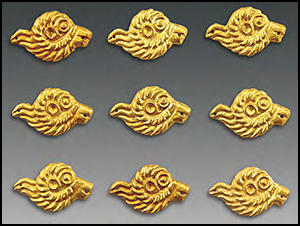Article contents
Exotica as prestige technology: the production of luxury gold in Western Han society
Published online by Cambridge University Press: 06 December 2017
Abstract

The recent discovery of the tomb of Liu Fei, King of Jiangdu, in eastern China, has provided a unique insight into the significance of early gold production in Western Han society. The recovery of luxury gold ornaments from mortuary contexts shows that hierarchical social order and status were maintained through the bestowal of these items upon the dead. Production of this gold not only entailed the control of organised local labour, but also the co-opting of methods and stylistic attributes associated with foreign territories. The influence of external aesthetics on local production may have helped imbue these artefacts with the prestige and significance that they carried for the elites who bore them into the afterlife.
- Type
- Research
- Information
- Copyright
- Copyright © Antiquity Publications Ltd, 2017
References
- 7
- Cited by




